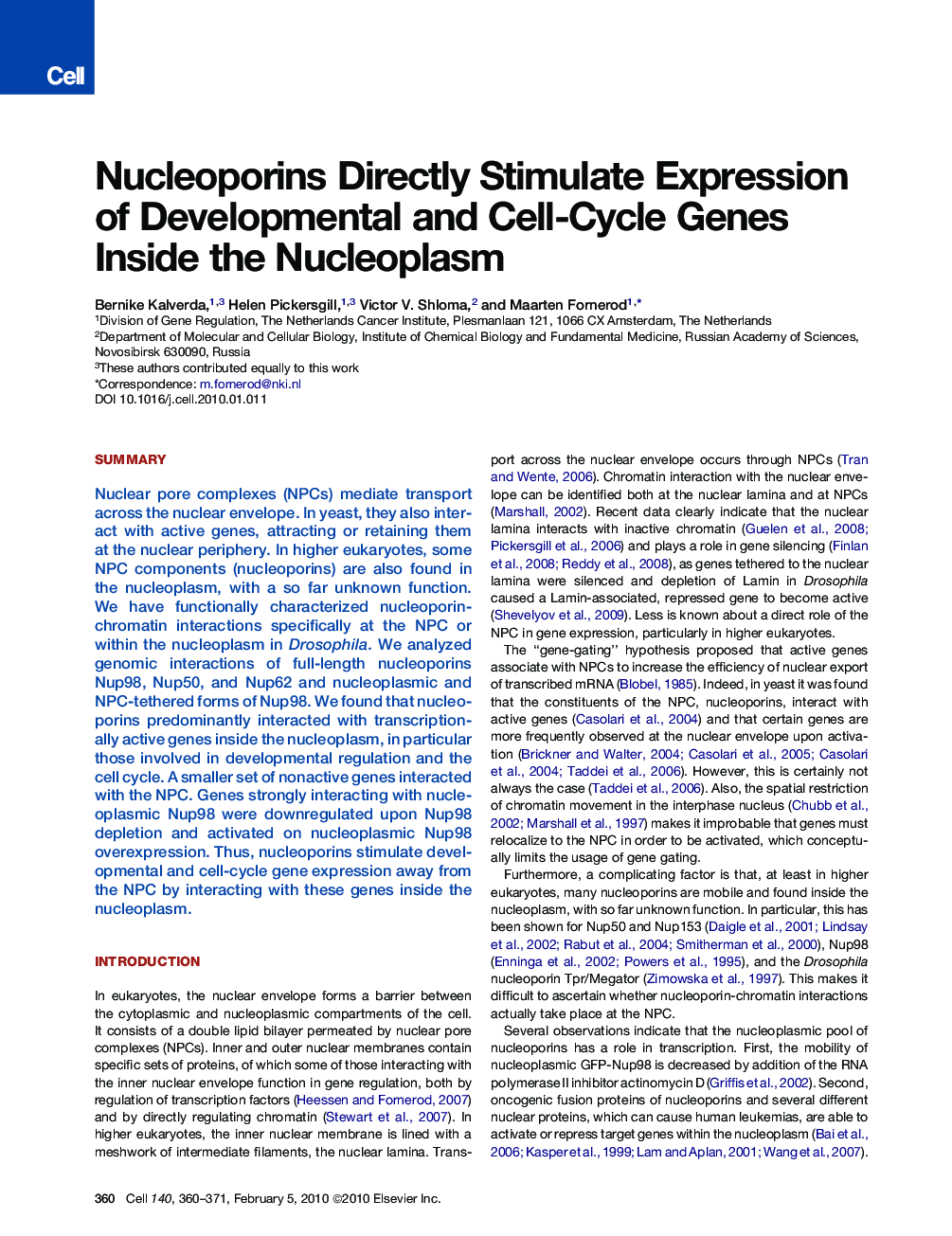| Article ID | Journal | Published Year | Pages | File Type |
|---|---|---|---|---|
| 2037143 | Cell | 2010 | 12 Pages |
SummaryNuclear pore complexes (NPCs) mediate transport across the nuclear envelope. In yeast, they also interact with active genes, attracting or retaining them at the nuclear periphery. In higher eukaryotes, some NPC components (nucleoporins) are also found in the nucleoplasm, with a so far unknown function. We have functionally characterized nucleoporin-chromatin interactions specifically at the NPC or within the nucleoplasm in Drosophila. We analyzed genomic interactions of full-length nucleoporins Nup98, Nup50, and Nup62 and nucleoplasmic and NPC-tethered forms of Nup98. We found that nucleoporins predominantly interacted with transcriptionally active genes inside the nucleoplasm, in particular those involved in developmental regulation and the cell cycle. A smaller set of nonactive genes interacted with the NPC. Genes strongly interacting with nucleoplasmic Nup98 were downregulated upon Nup98 depletion and activated on nucleoplasmic Nup98 overexpression. Thus, nucleoporins stimulate developmental and cell-cycle gene expression away from the NPC by interacting with these genes inside the nucleoplasm.
Graphical AbstractFigure optionsDownload full-size imageDownload high-quality image (448 K)Download as PowerPoint slideHighlights► Genes interact with nuclear pore proteins (Nups) at the pores and in the nucleoplasm ► Genes interacting with nuclear pore complexes are not preferentially active ► Nups in the nucleoplasm predominantly associate with active genes in Drosophila ► Nucleoplasmic Nups stimulate expression of developmental and cell-cycle genes
